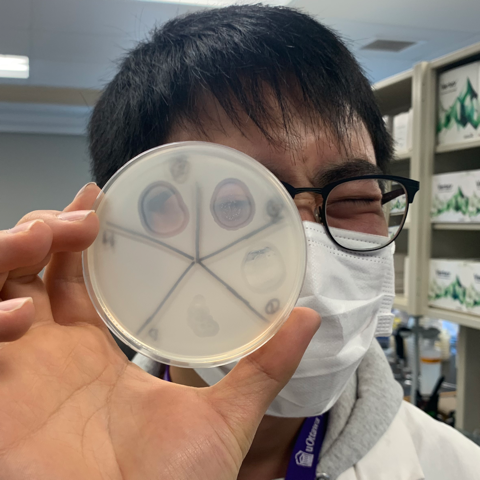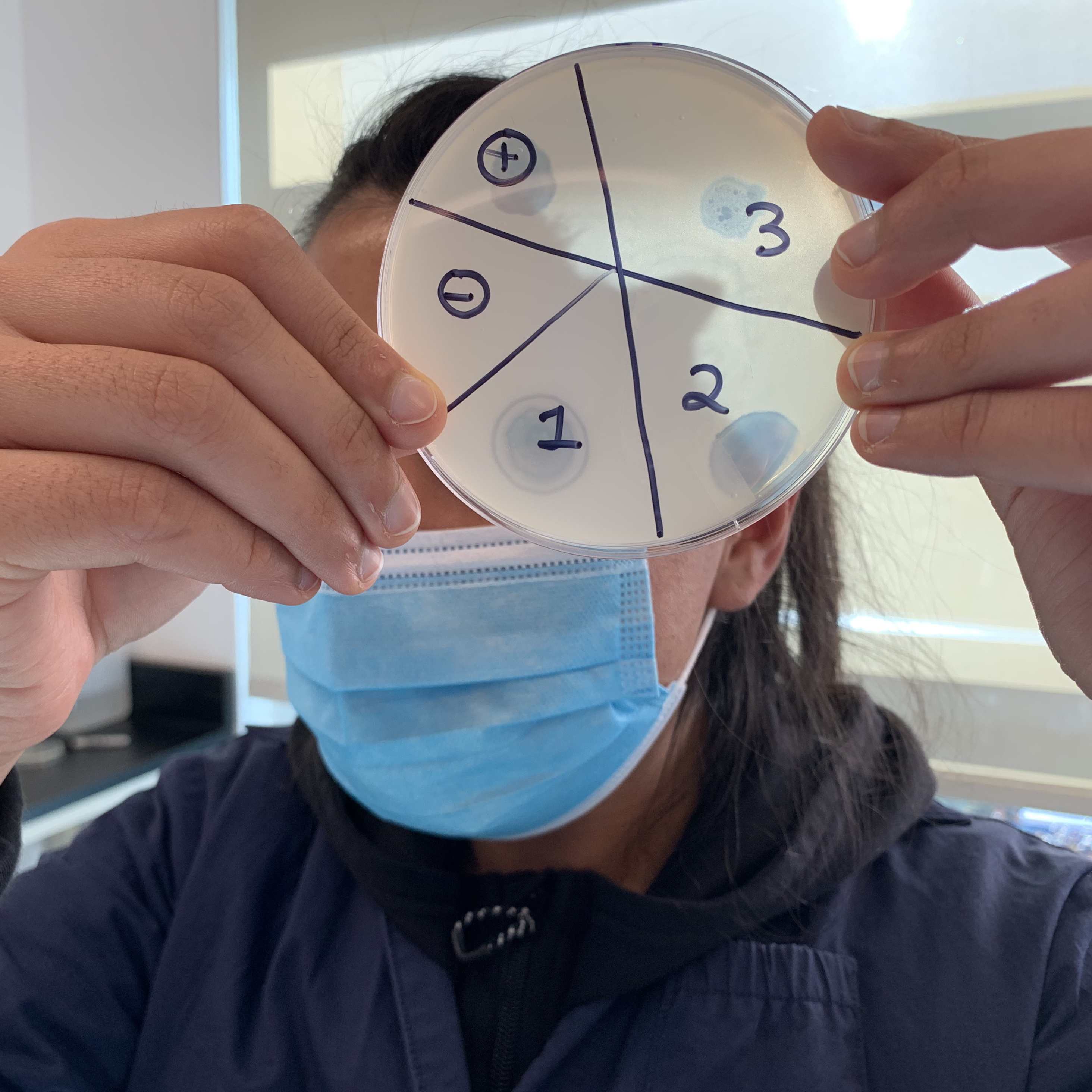Below is a summary of the abstract you submitted. Presenting author(s) is shown in bold.
If any changes need to be made, you can modify the abstract or change the authors.
You can also download a .docx version of this abstract.
If there are any problems, please email Dan at dar78@pitt.edu and he'll take care of them!
This abstract was last modified on March 16, 2021 at 11:13 p.m..

In 2020, four new AZ cluster bacteriophages, Crewmate, Lizalica, Amyev and Warda were isolated by the students at the University of Ottawa, using Arthrobacter globiformis B-2979 as a host. This project aims to characterize these four new AZ cluster phages and to provide insights on their genomic differences as well as to test if lysogens of each phage display superinfection immunity to other AZ cluster phages.
All four phages were found in Ottawa. Amyev was found in soil in a potted plant. Crewmate was found in soil next to the Rideau River. Lizalica was found in soil on the edge of an amphibian pond and Warda was found in a rose bed next to Ottawa City Hall.
All four bacteriophages belong to the siphoviridae family of double-stranded DNA viruses. This family is structurally characterized by having long, flexible, and non-contractile tails, as well as isometric or prolate heads.
The DNA from all four phages was sequenced at the University of Pittsburgh by Illumina Sequencing. Functional annotations were done using PECAAN, GeneMark, Phamerator, HHpred, NCBI databases, PhagesDB, and Starterator.
According to the sequencing data and auto-annotation, Crewmate has 74 genes and a 68.8% GC content. Lizalica has 71 genes and a GC content percentage of 67.4%, while Amyev’s genome consists of 71 genes and has 67.9% GC content. While most of the genome of these four annotated phages is conserved and similar to other AZ cluster phages, such as Lego and Tbone, the 3’ end of each shows a high degree of variation. The gene annotation for Lizalica has been completed and is ready for submission. Currently, Crewmate, Amyev, and Warda are being annotated.
Our work has focused on several unique aspects of these phages:
Crewmate gene, gp2, encodes an HNH endonuclease, which is not found in other AZ cluster phages. However, Phamerator analysis suggests that this gene is found in Mabel (A11), Heather (BB2), CloudWang3 (A6), suggesting possible evolutionary paths for the presence of this gene in Crewmate.
In addition, we have found a unique phage gene, gene 46, in Lizalica which is not found in AZ cluster phages (or any other phage) and has no homologues in any database. There was no strong evidence from BLASTP, HHPred, and synteny to support a functional prediction.
We have made lysogens of all four phages and have begun testing them for superinfection immunity to other phages. Despite the similarity of these four AZ phages, we have found surprising differences among the lysogens: 1) Crewmate lysogens are very difficult to isolate and grow significantly slower than the other lysogens, 2) the Amyev lysogen lacks immunity to Crewmate and Lizalica. We are therefore investigating differences in their genomes that might account for these differences in lysogeny.







